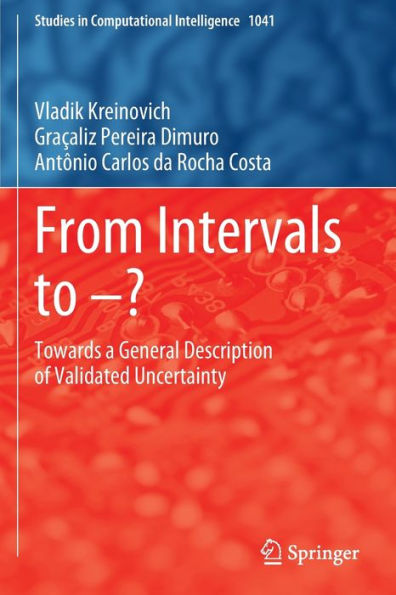In many cases—e.g., in celestial mechanics—the state of a system can be described by a few numbers: the values of the corresponding physical quantities. In such cases, for each of these quantities, we know (at least) the upper bound on the measurement error. This bound is either provided by the manufacturer of the measuring instrument—or is estimated by the user who calibrates this instrument. However, in many other cases, the description of the system is more complex than a few numbers: we need a function to describe a physical field (e.g., electromagnetic field); we need a vector in Hilbert space to describe a quantum state; we need a pseudo-Riemannian space to describe the physical space-time, etc.
To describe and process uncertainty in all such cases, this book proposes a general methodology—a methodology that includes intervals as a particular case. The book is recommended to students and researchers interested in challenging aspects of uncertainty analysis and to practitioners who need to handle uncertainty in such unusual situations.
In many cases—e.g., in celestial mechanics—the state of a system can be described by a few numbers: the values of the corresponding physical quantities. In such cases, for each of these quantities, we know (at least) the upper bound on the measurement error. This bound is either provided by the manufacturer of the measuring instrument—or is estimated by the user who calibrates this instrument. However, in many other cases, the description of the system is more complex than a few numbers: we need a function to describe a physical field (e.g., electromagnetic field); we need a vector in Hilbert space to describe a quantum state; we need a pseudo-Riemannian space to describe the physical space-time, etc.
To describe and process uncertainty in all such cases, this book proposes a general methodology—a methodology that includes intervals as a particular case. The book is recommended to students and researchers interested in challenging aspects of uncertainty analysis and to practitioners who need to handle uncertainty in such unusual situations.

From Intervals to -?: Towards a General Description of Validated Uncertainty
116
From Intervals to -?: Towards a General Description of Validated Uncertainty
116Paperback(1st ed. 2023)

Product Details
| ISBN-13: | 9783031205712 |
|---|---|
| Publisher: | Springer International Publishing |
| Publication date: | 11/28/2022 |
| Series: | Studies in Computational Intelligence , #1041 |
| Edition description: | 1st ed. 2023 |
| Pages: | 116 |
| Product dimensions: | 6.10(w) x 9.25(h) x (d) |
